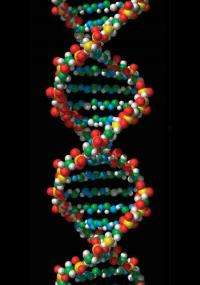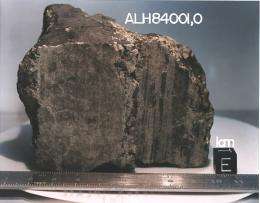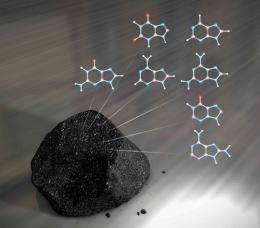The origin of life challenge: Searching for how life began

In 2011, retired chemist and entrepreneur Harry Lonsdale announced his plans to fund research on how life originally formed. Of the 76 proposals submitted to his Origin of Life Challenge, Lonsdale and his team of experts selected three to fund for at least the next year, with the potential to continue financial support in the future.
How life first developed is a poorly-understood process. Even today, scientists have attempted to determine its origins using a variety of methods.
NASA astrobiologist Chris McKay, who served as a referee to help sort through the proposals, pointed out that the submitted proposals spanned a wide variety of potential research.
"The scientific study of the origin of life is still early enough that there's not even a consensus on how to approach the problem," McKay said.
"That's kind of exciting, but also kind of intimidating, because we don't know what's going to be the right answer."
Privately funding research
Trained as a chemist, Lonsdale became fascinated by the study of origin of life after retiring young, ultimately deciding that he had the resources to contribute to the answer of this puzzling question. He assembled a team of experts in the field, scientists recommended by their peers, to review the proposals that poured in.
"I was very impressed by his decision to use some of his private money to fund scientific research on the origin of life," McKay said. "I figured the least I could do was lend my expertise to that cause."
The unpaid team met in San Diego to study the entries and make suggestions about those that seemed most qualified.
"I was just looking for fresh ideas with scientific merit that could be tested," Lonsdale said.
Though not the expressed intention, all three proposals wound up examining some aspect of the RNA world. RNA is thought to be the precursor to DNA, at one time not only carrying genetic information but also acting as a catalyst.
The winning selection, which received a $50,000 prize as well as a one-year grant to pursue their research, were British chemists John Sutherland at the Medical Research Council Laboratory in Molecular Biology in Cambridge and Matthew Downer at University College, London. They intend to study the prebiotic soup in which RNA may have originally formed, hoping to replicate the process.
According to Sutherland, he and Downer are "privileged and eager to use Harry's money to fund a fresh assault on the origins of life problem."

A second one-year grant was awarded to a Canadian-American team exploring how a complex pool of short RNAs, nucleotides, and inorganic material might become self-replicating RNA. The team, which includes Niles Lehman of Portland State University in Oregon, Peter Unrau of Simon Fraser University in British Columbia, Canada, and Paul Higgs of McMaster University in Ontario, Canada, will construct a laboratory system to resemble primordial Earth. Instead of focusing on only a single class of enzymes, they intend to watch for the discovery and use of any or all of them.
A third grant was extended for a single year to Wenonah Vercoutere of NASA Ames Research Center in California and David Deamer at the University of California, Santa Cruz, who will develop and test a lab simulation of volcanic hot springs and the steps that may have led to the formation of RNA.
Deamer, who also served on the referee committee, removed himself from the deliberation process when his proposal was being discussed.
Although each grant is only for a year, Lonsdale expressed his willingness to extend them as long as progress is being made.
"I'm prepared to spend $2 million over the next five to seven year period," he said.
If one of the groups reaches a dead end, Lonsdale may reopen the challenge and collect other proposals.
Each team expressed their admiration for Lonsdale's vision, and their appreciation of his support.
Most of the funding for research in the United States on the origin of life comes from NASA, which Lonsdale says may lead to a bias that life began off-planet. There are very little international or multinational opportunities.
According to McKay, private funding allows scientists to do things that "don't fit the mold so readily," with the potential to look at research "off the beaten track."
"Private funding could bring innovation that may be harder to find in public funding."

The Search for Life
Figuring out how life first started may seem like it should be simple—after all, life is everywhere on Earth. But the search is really far more complicated.
For one thing, scientists can't actually work backward. McKay explained that Darwinian evolution, the dominant process on the planet, involves self-replication, a process only found in living things, and thus can't be responsible for the original creation of life.
The other problem is that life itself has destroyed the evidence. As the planet has evolved over the years, living creatures have significantly changed their environments.
"What led to life has been lost in the long stretch of eons," McKay said. "It's been trampled on by small animals and children."
Finding clues on the active Earth remains a challenge, which is why McKay is so enamored of searching on more stagnant planets. Mars, for instance, has changed very little over the last four billion years, so if life evolved there, evidence of its origin might still be present.
Some scientists consider the idea that life may have begun on another planet and been carried to Earth by a meteorite. Even if that's the case, however, McKay noted that all three research projects selected by the challenge should still be able to replicate the process.
"If life started as RNA world, somewhere, somehow, the molecules making up RNA had to be reproduced."
The process should be the same no matter where life first began.
But Lonsdale thinks that such seeding would be a serious challenge, given the exposure to cold and radiation life traveling between planets would face.
"I'm putting my bets on planet Earth," he said.
Provided by Astrobio.net

















